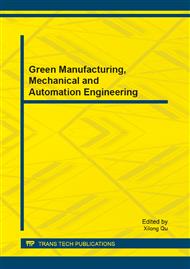p.1003
p.1007
p.1012
p.1016
p.1020
p.1025
p.1029
p.1034
p.1039
An Improved Direct Learning Architecture for Satellite High Power Amplifiers Pre-Distortion
Abstract:
The pre-distortion techniques based on traditional direct learning architecture (DLA) are commonly used to linearize high power amplifiers (HPAs) settled in ground-station or on board satellite merely, which cannot achieve a satisfying linearization. In this paper, an improved DLA, considering the satellite channel features with two HPAs in the loop, is put forward. Nonlinear polynomial with 7 order and 4 memory depth is utilized as pre-distorter and recursive least square (RLS) algorithm is adopted for its parameters updating. Simulation results show that with pre-distortion the power spectrum density (PSD) of 16APSK signal achieves about 7.2dB improvement, the EVM of signal constellation is greatly improved up to 61.83%, and desirable system linearization performance is acquired.
Info:
Periodical:
Pages:
1020-1024
Citation:
Online since:
July 2013
Authors:
Price:
Сopyright:
© 2013 Trans Tech Publications Ltd. All Rights Reserved
Share:
Citation:


